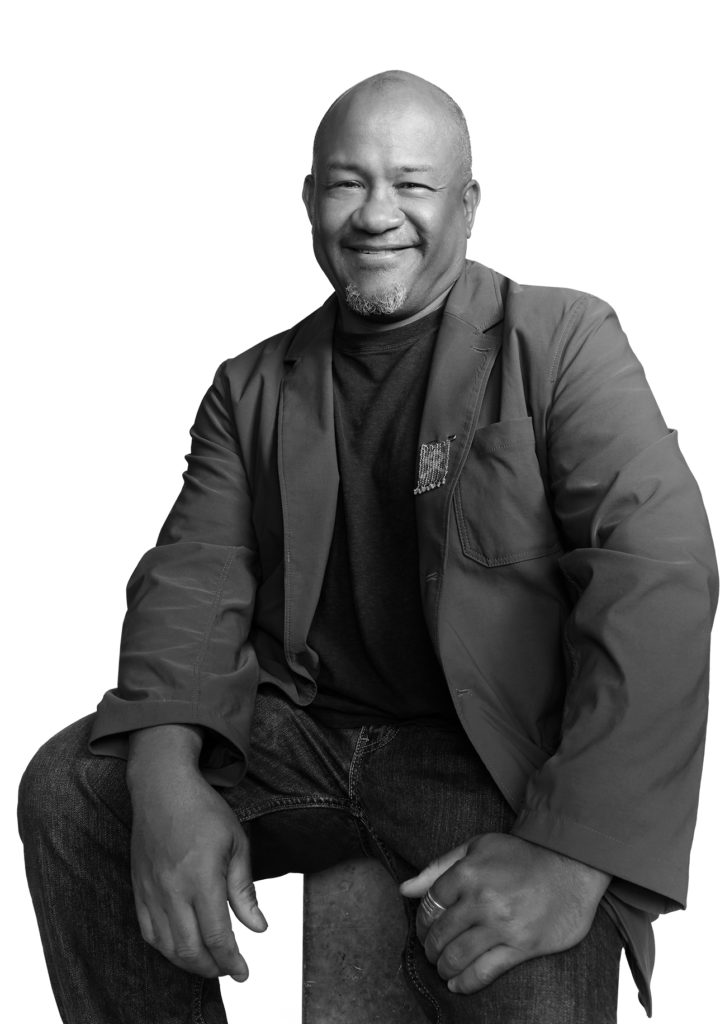
Garland Kirkpatrick is a professor of graphic design in the Studio Arts program of the LMU College of Communication and Fine Arts. He is an award-winning designer whose work has appeared in film, the collections of the Los Angeles County Museum of Art, Self-Help Graphics, The Oakland Museum, The Smithsonian and elsewhere. Kirkpatrick discussed design in the media capital of Los Angeles with Editor Joseph Wakelee-Lynch.
You’ve spent most of your career in Los Angeles. Is there an identifiable Los Angeles style of design?
I’d say emphatically, no. If you did a visual anthropology, you’d find a coexistence of multiple visual traditions as part of L.A.’s history, and it’s changing. I don’t think there can be one overarching style. Maybe the style is a calabsh of elements that are shaped by demographics and economic and social forces that hone L.A.’s visual identity.
Sean Dempsey, S.J., interviewed elsewhere in this issue, studies religion in Los Angeles. He sees Los Angeles, in its murals and storefront churches for example, as too complex to be grasped as a single identity. Rather, it’s a multiplicity of identities.
L.A.’s visual personality poses an identity crisis as well if you look at culture vs. power structure. At street level, the unofficial becomes an integral part of our experience. Those murals that spill into the vernacular signage of storefront economies of Central Ave. are really instructive as they lead as a pathway directly into the heart of the city, facing off with the financial centers, and, again, taking another path to the west, and in contrast to technocracy that’s building here. I think it’s very difficult to put one coat on this aspect of Los Angeles.
How does location influence design artists, especially in L.A.?
It’s reciprocal. When I ask people where they’re from, I meet very few Angelenos. People are from somewhere else, they’re drawn here because of the city’s vibrancy, its energy. Los Angeles is cast in harsh relief against the other capital, Washington, D.C. If D.C. is the capital of politics, we are definitely the capital of visuality. It’s a deep, rich source to draw from, ripe for reinvention and innovation.
As a designer, do you create impressions or do you tell stories?
The impression is a part of the visual narrative. It is what sustains us through the beginning, middle and end. But it is expressed through imagery or typography, or some mixture of both. So, in that regard, yes, that is a form of storytelling that isn’t like the textual narrative. Design is a collaboration, a conversation between the writers and editors on one hand and the designers and visual artists on the other. In a way, I function more as a mediator. I’m a big fan of A.M. Cassandre, a French mid-20th century artist who did the Dubonnet aperitif ads. He designed a three-framed ad that shows a man who is pouring a glass of wine and, simultaneously, the terms Dubo, Dubon and Dubonnet are being filled. There is a meeting of the image and the word within the communication, but the image is on an equal footing with the type. Good design does that, it seeks that synthesis. The word is the image as well.
We may not pay attention to design most of the time, but when we do it can evoke visceral reactions. Case in point: LMU’s new identity system. Why does that happen?
That’s a sign of personal investment. People are invested in the assets that were presented. If the community is to bear the standard of the brand, you have to expect that. Often, processes are not as transparent as this one. I would be more concerned if there was no response, because brands fade and disappear. The approach of coming up with strong metaphors for the heritage as it is presented in the contemporary context, understanding of leveraging color in ways that are more vibrant and flexible, creating the guidelines for use versus the strictures — that’s a conversation. The iconography is on point, despite the controversies around it. There are direct ties to the Jesuit heritage. Given the equity we already have, this takes it to another level.
Photo by Jon Rou
This article appeared in the spring 2019 issue (Vol. 9, No. 1) of LMU Magazine.
